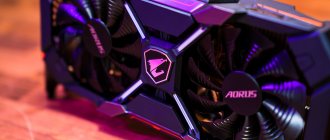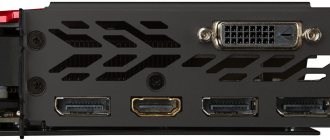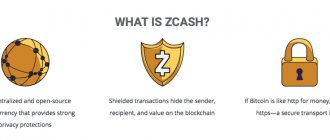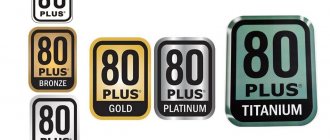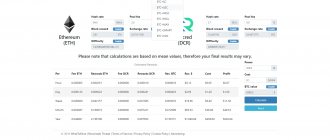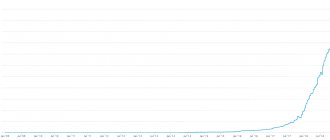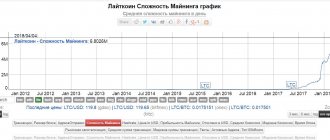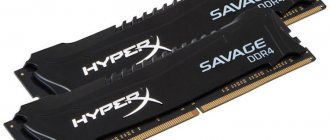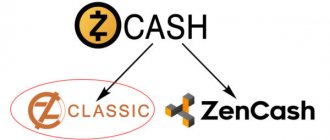The advent of Nvidia's GTX 1070 graphics cards has ushered in a new level of gaming performance. In some indicators, it is three times superior to the GTX 980 Ti, which most recently was the flagship of the line. High performance is also important for crypto mining. Therefore, “farmers” began to use the GTX 1070 for mining. After reading the article, you will learn how to make a farm on these GPUs and how effectively they work with different cryptographic algorithms.
GTX 1070 mining performance
The hashrate of the GTX 1070 when mining cryptocurrencies depends on the overclocking frequency, which differs depending on the manufacturer of the video card and RAM chips. These characteristics may differ even between different batches of GPUs from the same manufacturer. To mine Ethereum, it is better to buy products with Samsung chips, which have greater overclocking potential than memory from Micron.
To overclock, you will have to reflash the BIOS and change the memory timings. This operation can be done relatively safely with PC GPUs. But it’s better not to try to overclock Nvidia video cards installed in laptops. Any mistake can turn an expensive gadget into a “brick” that may not be restored even in a service center.
So, mining performance on the GTX 1070 and power consumption in the “desktop” version reaches the following values:
- Ethereum - up to 32 MHs/s (125 W);
- Ethereum+Decret - 31.8 MHs/s+157 MH/s (125 W);
- Ethereum+SiaCoin - 31.7 MHs/s+317 MH/s (125 watts);
- ZCash – 475 Sol/s (140 W).
Mining cryptocurrencies running on other algorithms is quite possible. However, it does not make commercial sense.
Overclocking gtx 1070 for Ethereum mining
It is worth remembering that the optimal settings for mining on the GTX 1070 are not the same as the maximum. The power of the card is great, but if you go beyond its limits, you risk breaking it down prematurely.
Mining Ethereum on the GeForce GTX 1070 given the current market situation (January 2020) has the advantage that good hashrate values are achieved without a noticeable increase in energy consumption (unlike, say, Zcash). There is no need to overclock the card to madness. It is enough to reach a value of 32 MH/s: as practice shows, for this it is enough to set the Power Limit to 65%, the frequency to 700 and give a current of 158 W. Further overclocking does not give a big gain, but it increases power consumption.
Comparison of hashrate on different video cards
The speed of Ether mining on Nvidia 1070 depends on the maximum overclocking frequency of the core and memory bus. The temperature during mining depends on both the load and the efficiency of the fans. We tested 4 cards from ASUS, EVGA and Gigabyte. The hashrate and overclocking frequency look like this:
- EVGA GTX 1070 SC – 31 MHs/s (0/+750);
- ASUS STRIX GTX 1070 - 31.5 MHs/s (0/+750);
- EVGA Founders Edition - 31.2 MHs/s (+200/+650);
- Gigabyte Founders Edition - 31.7 MHs/s (+200/+800).
Considering that the chip is one of the best for mining, farmers are limited in their choice. No one is looking for the best of the best video cards, but buying those that are available.
If you manage to find a store with a wide selection of GPUs, a few facts about cards from different manufacturers will help you make your choice:
- Miners are complaining about weak and unreliable fans installed on Gigabyte products. However, three coolers provide effective cooling, and if problems arise, replacing them does not take much time or money. Therefore, mining on Gigabyte does not cause problems.
- Founders Edition products have the best hashrate, but they come at the cost of a high noise level. But this is a factor that you need to be prepared for when assembling any farm.
- ASUS Strix is a little more expensive than its competitors, but it provides high mining speed and has a reliable and fairly quiet cooling system. Therefore, many miners prefer to take these cards rather than Gigabyte products.
- Despite being less famous, Zotac video cards have good hashrate. You can read quite a lot of positive reviews about them on specialized mining forums.
GTX 1070 - cryptocurrency mining performance review. (Micron memory)
Below we will publish the best hashrates and frequencies to achieve them. Keep in mind that the numbers are provided primarily for reference purposes and the hashrate of video cards may vary depending on the batch and manufacturer of video cards. However, if you have a choice, you should know that Samsung memory chips are superior to those from Micron, especially in terms of overclocking and stability at high frequencies. Attention: flashing the GPU BIOS in your laptop to a custom BIOS can turn your laptop into a brick.
Gigabyte Geforce GTX 1070 8GB - Ethereum, Dual mining, Zcash mining performance.
| Production | Miner | Hashrate | Frequencies | Power limit | Energy consumption |
| Ethereum | Claymore Ethereum miner | 32 MHS/sec | +100/+720 | 70% | 125W |
| Ethereum | Nvidia Optimized Miner | 32.3 MHS/sec | +100/+720 | 70% | 125W |
| Ethereum+Decred | Claymore Ethereum miner | 31.8 MHS/sec + 157 MHS/sec | +100/+720 | 70% | 125W |
| Ethereum+SiaCoin | Claymore Ethereum miner | 31.7 MHS/sec + 317 MHS/sec | +100/+720 | 70% | 125W |
| Zcash (no overclocking) | EWBF's CUDA Zcash Miner | 445 Sol/sec | +0/+0 | 100% | 180W |
| Zcash (overclocking) | EWBF's CUDA Zcash Miner | 475 Sol/sec | +100/+720 | 80% | 140W |
Gigabyte Geforce GTX 1070 8GB - mining performance on other algorithms.
- NeoScrypt (Experemental) = 0.654 MHS/sec. (* 0.000442 BTC/day).
- Lyra2Rev2 (ccminer) = 37.29 MHS/sec. (* 0.000744 BTC/day).
- Dagger-Hashimoto (ethminer) = 27.696 MHS/sec. (* 0.00081 BTC/day).
- Decred (ccminer) = 2.804 GHS/sec. (* 0.000573 BTC/day).
- LBRY (ccminer) = 279.86 MHS/sec. (* 0.000737 BTC/day).
- Equihash (excavator) = 464.4 Sol/sec (* 0.00071 BTC/day).
- Pascal (excavator) = 972 Sol/sec (* 0.000284 BTC/day).
- X11Ghost (ccminer) = 7.25 MHS/sec (* 0.00037 BTC/day).
- X11Ghost (ccminer_alexis) = 11.5 MHS/sec (* 0.000601 BTC/day).
- Sia (excavator_server) = 1.6 GHS/sec (* 0.000366 BTC/day).
- Blake2s (excavator_server) = 3.945 GHS/sec (* 0.000644 BTC/day).
* - at rates as of July 24, 2017.
Comparison of GTX 1070 from different manufacturers in Ethereum mining.
| Video card | ETH hashrate | Frequencies: | Power Limit: | Temperature: | Notes: |
| EVGA GTX 1070 SC 8GB | 30-31 MHS/sec. | +0/+750 | 69% | 59-64° | Fans: 31%, almost silent |
| ASUS STRIX GTX 1070 | 31.5 MHS/sec. | +0/+750 | 70% | 63° | Fans: 40% |
| Gigabyte Founders Edition GTX 1070 | 31.7 MHS/sec. | +200/+800 | 80% | 69° | |
| EVGA Founders Edition GTX 1070 | 31.2 MHS/sec. | +200/+650 | 70% | 66° |
Which Geforce GTX 1070 video card model is best suited for mining? In fact, most GTX 1070 video cards are already sold out (because the GTX 1070 is one of the best GPUs for mining), so in most cases you simply have no choice and have to buy what is in the store. But here are a few facts that may help you make your choice (if you have one, of course).
- Gigabyte
: users complain that Gigabyte VKs have the weakest and most unreliable fans (compared to competitors). But for me personally, the Gigabyte Geforce GTX 1070 G1 Gaming is an excellent choice, since the three fans installed on it (albeit not the most reliable) allow it to maintain low temperatures. - NVIDIA Founders Edition
. Although FE video cards are usually famous for their fairly high hashrates, they are also some of the noisiest. - ASUS STRIX
. Is probably the most popular choice among miners. Although this model is a little more expensive than its competitors, you can get excellent hashrate and a quiet and durable cooling system from it. - Zotac
. It features high hashrates and a good cooling system with 2 fans. Quite a lot of positive feedback from users.
Equipment for assembling 200 MHS/sec Ethereum mining rig:
- GPU
:
Gigabyte Geforce GTX 1070 G1 Gaming 8GB
. - MB
:
Biostar TB250-BTC
. - CPU
:
Intel Celeron G3900 Dual-core 2.8 Ghz
. - SSD
:
ADATA 120 GB
. - Power supply
: 2 x
Corsair CS750M 750W
, semi-modular design, 80+ GOLD certificate. - Synchronizer for 2 power supplies
: Add2PSU. - Power button
: 2-pin SW PC Power Cable on/off Push button.
Using GTX 1070 in a laptop for mining:
Some people ask: “Can I use the powerful GTX 1070 graphics card in my gaming laptop for cryptocurrency mining?” Personally, I would not recommend using a laptop for mining, if suddenly something happens to your GPU during the process, then you can lose the entire device, which costs much more than a regular desktop with the same video card. However, if you understand the risks and still want to try mining cryptocurrency on a laptop, then with a laptop with a GTX 1070 you will most likely be able to get decent results.
Here are the results I was able to get:
- 25.8 MHS/sec
in Ethereum mining at stock frequencies and power consumption of 147W. - 30.1 MHS/sec
in Ethereum mining overclocked (+150/+700) while the GPU temperature exceeded 80°.
Hashrate problem:
Some, after purchasing a new GTX 1070 and installing the latest driver from NVIDIA and miners, are faced with the problem of a very low hashrate of 2.5 MHS/sec
. And if you find yourself in a similar situation, it is easy to fix. This does not mean that your video card is faulty, you just have a problem with the Windows 10 OS. There are two ways to solve this problem: 1) switch to Linux, 2) update the version of your Windows 10 OS to v.1703 - which eliminates this bug.
Is it worth buying GTX 1070 video cards for mining? Of course it's worth it. In our opinion, although prices for this GPU have increased significantly recently due to high demand from miners, purchasing the GTX 1070 is still an excellent investment. It is worth remembering that the GTX 1070 is good not only at mining, it is also the most productive video card in games for the money and is the golden mean between the GTX 1060 and the more expensive GTX 1080 and GTX 1080 Ti. Most likely, you will not have any problems with the possible future resale of this video card to gamers.
You and your wallet will be able to feel this when you try to find one of the top video cards on sale.
Among miners, assembling farms on gtx 1060 video cards is still popular, but buying up the next generations of gtx 1070 and gtx 1080 is becoming increasingly popular. The cost of these cards in Eastern European countries reaches twice their cost in the USA and the EU.
We have an MSI GTX 1070 Gaming X 8G video card, which has been working for a week mining the Zcash cryptocurrency. Let's find out what we have achieved and how mining goes on the MSI GTX 1070 Gaming X 8G.
The video card runs on a very ancient but practical system. It is based on an Asus P5/EPU motherboard (where the network port and sound chip were once burned out by lightning; they were replaced by boards in PCI slots), 8 GB RAM (four slots of 2 GB each), a working Intel Core 2 Quad Q6600 processor at default frequencies 2.4GHz. Thus, today, this is a classic office computer, which is not relevant for games with other complex tasks.
We inserted the purchased MSI GTX 1070 Gaming X 8G into this system and started mining.
1. Before starting the actual mining, we studied the capabilities of the card and the optimal cryptocurrencies that will generate the most income.
We installed Nicehash Miner, a mining program popular among miners, which allows you to find out the optimal currency for mining by running a preliminary benchmark.
The most optimal algorithm for mining (mid-June) turned out to be the Equihash algorithm (about $4 per day).
Using the online hashrate calculator on whattomine.com, we learned that using the Equihash algorithm you can mine Zcash (ZEC), Zencash (ZEN), Hush (HUSH) and others. We chose Zcash, which allowed us to receive about 4-5 dollars per day to our wallet.
2. Overclocking the video card. The goal of overclocking was to: reduce power consumption, which would lead to less heating of the card, increase the frequency of the chip core and memory (Micron). For overclocking we used the popular MSI Afterburner utility.
Using advice from various forums, we:
we lowered the Power Limit of the video card to 75%, set Core Clock to +200 (2025 MHz) and Memory Clock to +600 (4400 MHz), cooler speed from 70 to 90 (depending on the weather outside). With these settings, the video card mined Zcash at a speed of 477-490 Sol/s with a consumption of more than 200W. Core temperature is 60-65 degrees. This system worked for two weeks after which it began to reset.
Second revision of settings:
The Power Limit of the video card is reduced to 66%, the Core Clock is set to +191 (2012 MHz) and Memory Clock to +581 (4387 MHz), the cooler speed is from 70 to 80 (depending on the weather outside). The extraction speed is 480-490 Sol/s with a consumption of more than 150W. Core temperature is 56-60 degrees.
Thus, we have achieved reduction in heating, energy consumption and fan noise.
You can often find reports about squeaking throttles under load in this category of cards, but our MSI GTX 1070 Gaming X 8G video card, even with cooler speeds at 80, makes less noise than the overall cooling in the system unit.
It is worth noting that each video card has its own specific overclocking features. Here are some general tips:
- Overclock the video card memory first, the usual limit for Micron chips is around +600 (4400-4500 MHz);
- Next, overclock the core frequency, the limit is usually around +200 (2050 MHz);
- Try to reduce the Power Limit to less than 75%, this will significantly reduce the electricity consumption of the video card;
- Try not to overheat the video card more than 65-70 degrees. This will increase its service life and eliminate warranty repairs, which will take about 3-4 weeks (calculate the losses).
A little tip: if you want to track energy consumption during mining, add -pec at the end of the settings line in the xxxxx.bat file
This is how it turned out for us
The cryptocurrency is mined on the zcash.flypool.org pool in the amount of about $5 per day, with the cost of 1 unit of Zcash (ZEC) being $380.
Let's get ahead of ourselves. To safely sell and buy mined cryptocurrency, we recommend a Telegram bot. Read the overview and details of the work in.
In this article we will talk about assembling a mining farm on the new Nvidia GTX 1070Ti video cards, these are the updated, familiar GTX 1070. Unlike the GTX 1070, the new product has a very decent hashrate using the Equihash algorithm and produces up to 550 sol/s
, depending on the brand. Both farms, and we will have two of them in the article, were assembled for mining the following coins: Zcash, ZClassic, Zencash, Bitcoin Gold.
Unfortunately, at the moment the choice of video cards is limited, and prices are rising before our eyes; we managed to buy 8 pieces of MSI Armor GTX 1070Ti and 8 pieces of MSI Gaming X 1070Ti. We have already written that if you have questions about ordering or choosing video cards, ask in Telegram chat.
How to build a 180 MHs/s rig on GTX 1070
To create a farm that will mine ether at a speed of 180 megahashes per second, you will need the following components:
- six GTX 1070 video cards from ASUS or another manufacturer;
- Biostar TB250-BTC PRO motherboard or an analogue with at least 6 PCI-E slots;
- a celeron processor with a socket corresponding to the motherboard (it is needed to maintain the operation of the farm and does not affect the hashrate);
- 120 GB SSD disk;
- two Corsair CS750M 750-watt power supplies;
- synchronizer for power supplies;
- remote power button.
This solution will provide a hashrate of over 180 MHs/s and generate income of more than $160 per month. If you subtract the energy costs, you'll be left with $130 in profit.
Using Nvidia Geforce 1070 in a laptop for mining
There are gaming laptops on sale with a 1070 chip. Owners of such devices are interested in whether they can use their GTX 1070 to mine ether or other cryptocurrency.
The main problem with using such laptops is ineffective cooling and less reliability. When working around the clock at full load, the video card (and with it the other chips) will overheat. In this case, it will not be possible to replace only the GPU - you will have to change the motherboard assembly.
Considering the high cost of such gadgets, it is better not to risk using them in crypto mining. If you want to take a risk, you can get the following ether production indicators:
- 25.8 MHs/s at standard frequencies;
- 30.1 MHs/s after overclocking the chip and memory by 150 and 700 megahertz, respectively.
The overclocked video card heats up to 80 degrees, which is unacceptably high for constant operation of the laptop.
Features of using GTX 1070
The GTX 1070 is used in mining to create efficient farms with quick payback. Their owners prefer to purchase devices with low noise levels, maximum overclocking capabilities and high hashrate.
It is worth noting that even the most modern and high-quality representatives of this model range do not offer ideal solutions, so here everyone decides for themselves what is more important to them - performance, noise level, energy consumption or other characteristics.
NVIDIA Geforce GTX 1070 is perhaps the most popular among buyers, because it has a low noise level and a reliable cooling system.
Solving low hashrate problems
Some miners building farms on the GTX 1070 complain that the hashrate is too low, not exceeding 2.5 megahashes per second. Updating drivers and the mining application does not help the situation. The problem appears when using Windows 10. There are two ways to solve it:
- switch to Ubuntu;
- update Windows to version 1703 or higher.
The second method is simpler and faster, but the first allows you to once and for all get rid of regular problems that arise when working on a Microsoft OS.
Overclocking GeForce 1070 for mining Zcash and Ethereum
The high cost of video cards on the Eastern European market and the low exchange rate of cryptocurrencies are forcing miners to squeeze the maximum possible out of their devices. In order not to lose the warranty, you need to use only standard utilities that do not affect the BIOS firmware. With their help, you can increase the core frequencies. improving Zcash mining on Nvidia 1070, and video memory speed to speed up Ethereum mining. You can also programmatically reduce power consumption on the GF 1070.
For mining, it is better to use the Nicehash Miner application, which works correctly with most pools and provides high performance.
You can select the target currency using the Whattomine service or a similar cryptocurrency profitability calculator.
By far the most income can be obtained from mining ZEC, but ETH brings in almost as much money. Therefore, a lot depends on the price of electricity (energy consumption when mining ether is lower) and fluctuations on the cryptocurrency exchange. It is possible that by the time of publication more will be received on air.
To set up efficient Ethereum Classic mining or set optimal settings for ZEC mining, you need the MSI utility.
In both cases, you need to play a little with the frequencies of the chip and memory, and also adjust the power consumption parameters.
To optimize ZEC production, you can set approximately the following parameters:
- core frequency - 2025 MHz (+200);
- memory frequency - 8600 MHz (+500);
- power consumption limit (Power Limit) - 75%;
- fan rotation speed - 70-90% (depending on room temperature).
At these settings it is possible to get 490 Sol/s and achieve a power consumption of 200 watts. The temperature of the chip should not rise above 65 degrees.
If you slightly reduce the overclocking of the chip and RAM frequencies (to +190 and +580 MHz, respectively), you can achieve stable operation with a power consumption limit of 66%. These settings provide the same hashrate (up to 490 Sol/s) with only 150 watts of power. This option seems more profitable.
At the same time, the heating of the chip and the noise from the fan will also decrease.
MSI Afterburner interface during Zcash mining process.
Each video card has its own overclocking limits. Therefore, frequencies need to be raised gradually, increasing or decreasing them depending on the stability of operation. You can control it using a miner application. You will have to focus on two parameters at once: hashrate and the number of hash calculation errors.
General recommendations for initial overclocking frequencies look like this:
- Micron's initial memory bus overclocking level is 600 MHz. For Samsung it is 100-150 MHz higher.
- The core frequency can be immediately increased by 200 MHz.
- All video cards work reliably at a Power Limit of 75%.
- The fan speed must be selected so that the GPU temperature does not exceed 70 degrees. Otherwise, the card will quickly fail and, at best, it will have to be sent in for warranty repair, or at worst, replaced with a new one.
- During overclocking, it is worth recording the frequencies at which you managed to achieve stable production, so that if problems arise, you can “roll back” to them. If failures occur, you need to reduce the maximum overclocking frequencies of the core and memory by 10 and 50 MHz, respectively, and try again.
- Acceleration must be done in stages. First increase the core frequency, then the memory. This way you can see at what stage problems arise.
Overclocking GeForce 1070 for ZEC and ETH mining
The key to successful crypto mining, regardless of the chosen object, will be the correct equipment settings. We are talking, in particular, about memory and adapter chip frequencies, as well as power consumption parameters. So, when mining ZEC, experienced users recommend the following parameters for Geforce cards:
- Memory frequency – 8600 MHz.
- Core frequency – 2025 MHz.
- The cooler speed is from 70 to 90 percent, taking into account the temperature in the room.
- The limit on electricity consumption is 75 percent.
As practice shows, such parameters make it possible to provide 490 Sol/s with energy consumption within 200 W.
Considering the possibility and relevance of overclocking the GTX 1070 video card for mining Zcash and Ethereun, it should be noted that each adapter has its own limits
. It is for this reason that frequencies should be increased gradually and adjusted taking into account indicators of operational stability, which can be controlled by special software. Recommendations for starting overclocking the card are as follows:
- The entry level for Micron and Samsung memory buses is 600 and 700-750 MHz, respectively.
- The core frequency can be increased from the start to 200 MHz.
- The Power Limit indicator, which ensures normal operation of all video adapters, is 75 percent.
- The fan speed is selected so that the GPU operates at a temperature of no more than 70°C.
Experts advise that during the process of overclocking the card, fix the frequencies that ensure stable crypto mining. This will allow you to “roll back” to better settings if failures occur. You should also remember that the core frequency increases first, and then the memory.
GTX 1070 payback
Taking into account the continuous upward movement of the vast majority of digital coins, as well as a significant drop in their exchange rate, many users are primarily interested in the payback of the equipment. It is worth noting that, despite all the above points, the price of video cards from Asus and other brands continues to rise. In such situations, members of the cryptocurrency community have to use optimal overclocking of the GTX 1070 video card for mining.
After increasing the indicators, the ZEC production speed reaches 490 Sol/s. Ultimately, the card brings in income of 1.04 USD per day, or about 31 USD per month. Approximately similar indicators are recorded when mining Ethereum. Considering the cost of the device, even without the cost of consumed electricity, you can understand that the card will pay for itself no sooner than in two years. However, many experts are confident that after a record decline in the virtual coin market, we should expect an equally active rise in prices. This, in turn, will have a positive impact on profitability.
mining. And GTX cards are the “golden mean” between low-power 1060 and expensive 1080.
Payback period of investments
The situation on cryptocurrency exchanges is changing, so we can only say for sure that it is profitable to mine on the GTX 1070 today.
After overclocking the chip and memory, the ZEC mining speed increases to 490 sol/s. Thanks to this, you can earn $1.04 per day by mining or $31 per month when working with ZEC. This is a couple of dollars higher than what you can get on ether.
Select a cryptocurrency to calculate production:
Powered by CryptoRival The price of the video card is $540 on Amazon. Even without electricity costs, the device will pay for itself in almost a year and a half. If we take into account electricity bills and the increasing complexity of production, it will not be possible to pay for the card even in two years.
Conclusion
With the current decline in prices for cryptocurrencies, investments in mining Zcash or Ethereum on the GTX 1070 will not pay off even in a year. Taking into account the high volatility of assets, the constantly growing difficulty of mining and announced forks, investing in mining is quite risky.
On the other hand, the current decline in prices should end with another rise, in which prices for video cards will rise even higher. It is better to start production today in order to get ahead of competitors who will begin to enter the market at the growth stage.
GTX 1070 video cards are considered the golden mean between the expensive 1080 and the rather slow 1060. The excellent characteristics of the gaming video card make it easy to sell it on the secondary market not only to miners, but also to gamers. Therefore, if you want to get out of business, there will be no problems with selling unnecessary equipment.
